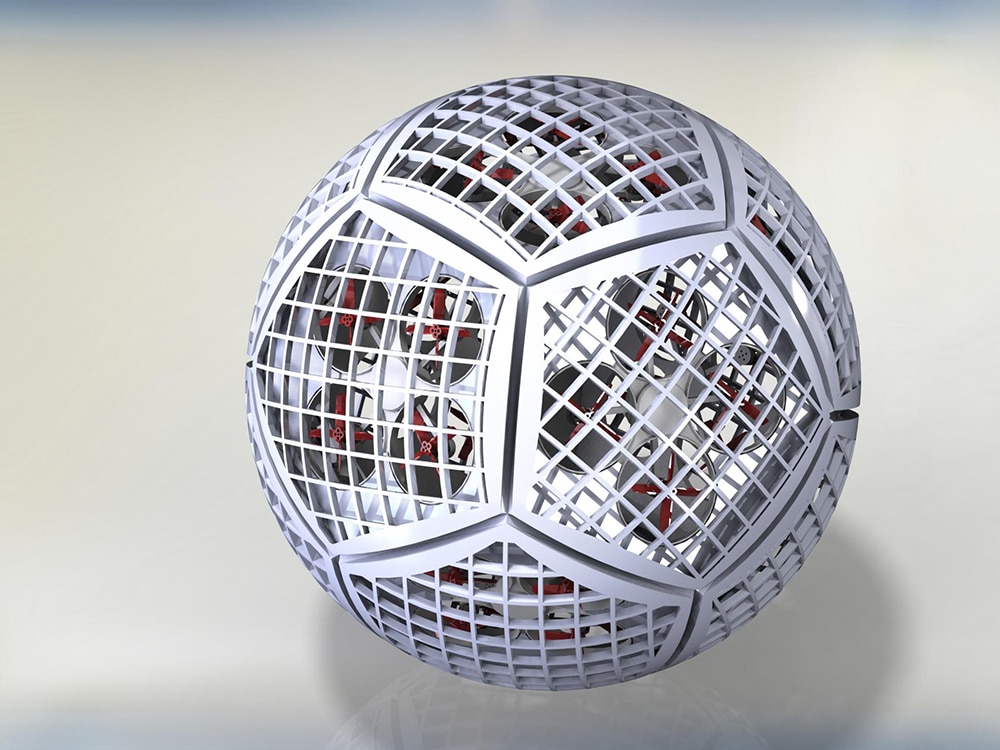Robots are incredible explorers of our solar system, reaching the places where humans can’t capture images and scientific data about other planets and moons. As we are still learning about these places, the robotic explorers may need to be more adaptable to strange and harsh environments.
NASA is developing a robot concept for a transformational vehicle with its Shapeshifter project to explore such treacherous, distant worlds. Shapeshifter is made of smaller robots that can morph into rolling spheres, flying drones, swimming submersibles, and more.
On Wednesday, the agency shared a look of a 3D-printed prototype Shapeshifter. The machine is being tested at NASA’s Jet Propulsion Laboratory in Pasadena, California.

The concept could include 12 robots that can roll, fly, float, and swim. These robots can explore caves and oceans and can go where other robots aren’t able to explore.
These smaller robots are called “cobots,” each equipped with a small propeller. The researchers say these cobots could come together automatically without any commands from the Earth, to form into a sphere to roll on flat surfaces and conserve energy. They can fly independently or even create a daisy chain while exploring a cave.
The current 3D-printed prototype looks like a drone encased in an elongated hamster wheel. The test version has two halves that split apart and can fly as aerial drones, or they can combine together and roll along the ground. It’s being tested as part of the early-stage research program NASA Innovative Advanced Concepts (NIAC), which funds concepts that sound impossible but could help make scientific discoveries in the future.

The inventors of the Shapeshifter see it exploring Titan, Saturn’s moon with bodies of liquid methane on the surface. In fact, NASA already has plans to send a rotorcraft to Saturn’s moon Titan with the Dragonfly mission planned for 2026 to follow up on observations made by NASA’s Cassini mission that previously explored Saturn and Titan. It could explore the moon itself, including icy volcanoes that spew ammonia or caves hiding beneath its dense atmosphere.
The cobots could rely on a spacecraft lander that can deliver them to Titan, provide energy, and carry instruments for experiments and analysis. For now, Shapeshifter is semi-autonomous, but its future design will depend on cobots that can auto-assemble without needing commands from Earth.
It is in the very early stages of development, and the team will submit their concept to NIAC’s Phase II selection process in 2020. But even if selected, it will need many more years until Shapeshifter visits a moon-like Titan. Until then, the curious Titan enthusiast can continue to follow NASA’s Cassini team as it releases new discoveries about the strange moon.
